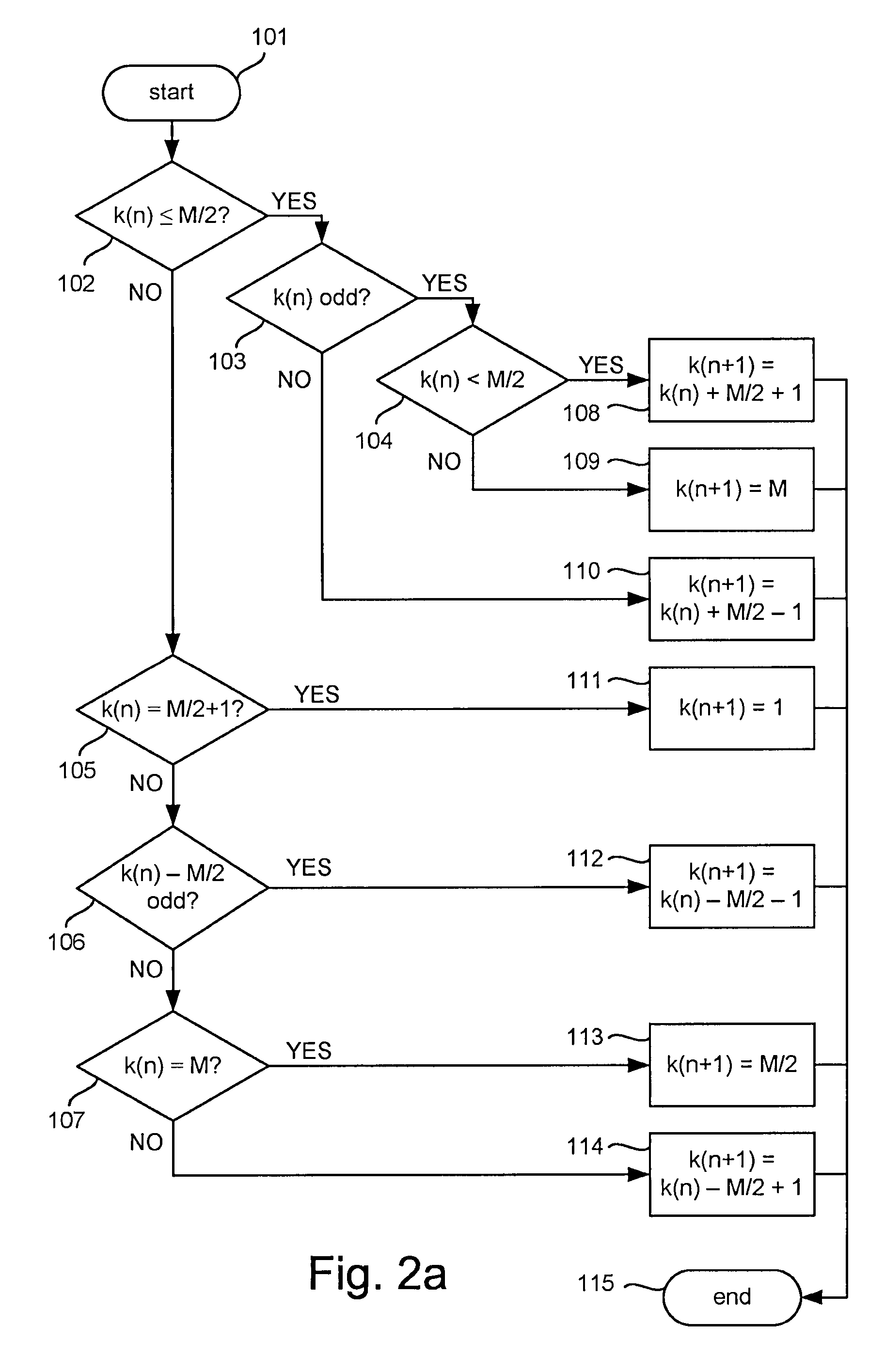Time-interleaved analog-to-digital-converter
a converter and time-interleave technology, applied in the field of time-interleaved analog-to-digital converters, can solve the problems of increasing the circuit area and power consumption of the ti-adc, adding an undesired portion to the circuit area and the effect of reducing the influence of offset errors
- Summary
- Abstract
- Description
- Claims
- Application Information
AI Technical Summary
Benefits of technology
Problems solved by technology
Method used
Image
Examples
Embodiment Construction
[0062]FIG. 1 shows a block diagram of a time-interleaved (TI) analog-to-digital converter (ADC) 1 according to an embodiment. The TI-ADC 1 may comprise an array 20 of M sub ADCs ADC1, . . . , ADCM, where M may be an even integer. Each row of the array 20 may comprise exactly one of the sub ADCs ADC1, . . . , ADCM, as indicated in FIG. 1. The placement of sub ADCs in FIG. 1 reflects the physical placement of sub ADCs on a chip or integrated circuit, i.e. ADC1 may be placed in a first row of the array, ADC2 may be placed in a second row adjacent to the first row, etc., and ADCM may be placed in a last row of the array. Each of the sub ADCs ADC1, . . . , ADCM operate at a common first clock frequency or sampling frequency. Sampling instants of the sub ADCs ADC1, . . . , ADCM are mutually displaced in time, so as to achieve effective sampling of the TI-ADC 1 at a second clock frequency or sampling frequency, which is higher than the first clock frequency or sampling frequency with a fac...
PUM
 Login to View More
Login to View More Abstract
Description
Claims
Application Information
 Login to View More
Login to View More - R&D
- Intellectual Property
- Life Sciences
- Materials
- Tech Scout
- Unparalleled Data Quality
- Higher Quality Content
- 60% Fewer Hallucinations
Browse by: Latest US Patents, China's latest patents, Technical Efficacy Thesaurus, Application Domain, Technology Topic, Popular Technical Reports.
© 2025 PatSnap. All rights reserved.Legal|Privacy policy|Modern Slavery Act Transparency Statement|Sitemap|About US| Contact US: help@patsnap.com



